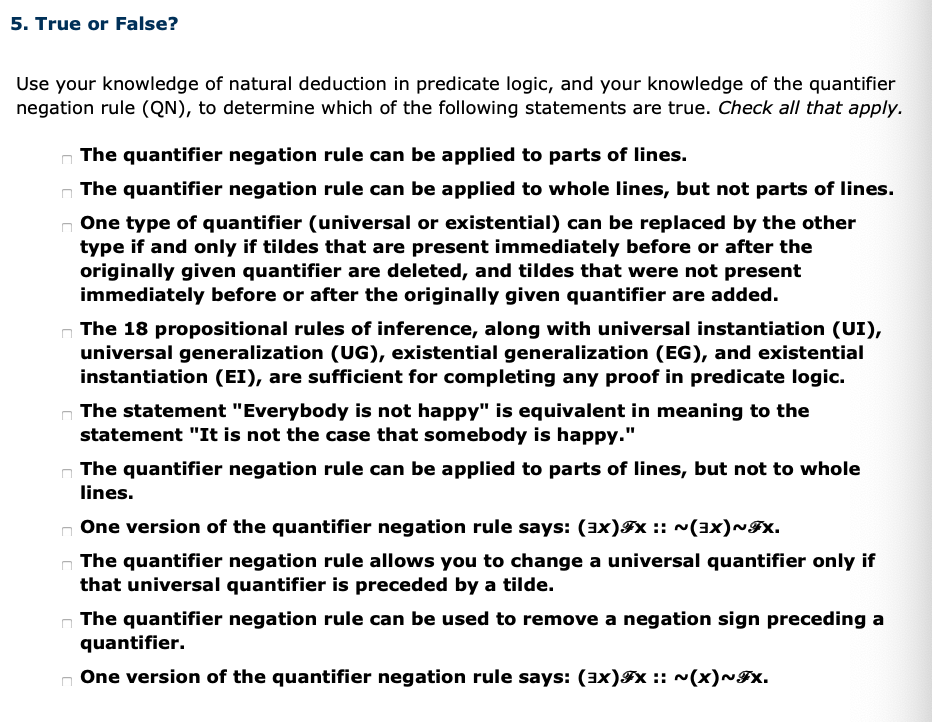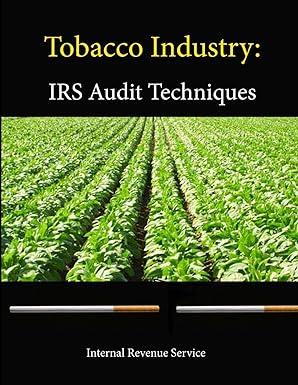
5. True or False? Use your knowledge of natural deduction in predicate logic, and your knowledge of the quantifier negation rule (QN), to determine which of the following statements are true. Check all that apply. The quantifier negation rule can be applied to parts of lines. The quantifier negation rule can be applied to whole lines, but not parts of lines. One type of quantifier (universal or existential) can be replaced by the other type if and only if tildes that are present immediately before or after the originally given quantifier are deleted, and tildes that were not present immediately before or after the originally given quantifier are added. The 18 propositional rules of inference, along with universal instantiation (UI), universal generalization (UG), existential generalization (EG), and existential instantiation (EI), are sufficient for completing any proof in predicate logic. The statement "Everybody is not happy" is equivalent in meaning to the statement "It is not the case that somebody is happy." The quantifier negation rule can be applied to parts of lines, but not to whole lines. One version of the quantifier negation rule says: (3x)FX :: ~(3x)~FX. The quantifier negation rule allows you to change a universal quantifier only if that universal quantifier is preceded by a tilde. The quantifier negation rule can be used to remove a negation sign preceding a quantifier. One version of the quantifier negation rule says: (2x)Fx :: ~(x) FX. 5. True or False? Use your knowledge of natural deduction in predicate logic, and your knowledge of the quantifier negation rule (QN), to determine which of the following statements are true. Check all that apply. The quantifier negation rule can be applied to parts of lines. The quantifier negation rule can be applied to whole lines, but not parts of lines. One type of quantifier (universal or existential) can be replaced by the other type if and only if tildes that are present immediately before or after the originally given quantifier are deleted, and tildes that were not present immediately before or after the originally given quantifier are added. The 18 propositional rules of inference, along with universal instantiation (UI), universal generalization (UG), existential generalization (EG), and existential instantiation (EI), are sufficient for completing any proof in predicate logic. The statement "Everybody is not happy" is equivalent in meaning to the statement "It is not the case that somebody is happy." The quantifier negation rule can be applied to parts of lines, but not to whole lines. One version of the quantifier negation rule says: (3x)FX :: ~(3x)~FX. The quantifier negation rule allows you to change a universal quantifier only if that universal quantifier is preceded by a tilde. The quantifier negation rule can be used to remove a negation sign preceding a quantifier. One version of the quantifier negation rule says: (2x)Fx :: ~(x) FX







